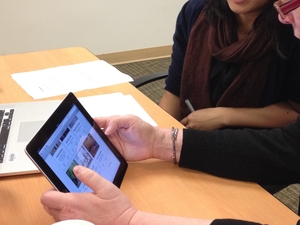KP Moves
Responsive Web App
KP Moves is part of Project Move - a broader Kaiser Permanente initiative to support and encourage physical activity for KP members. KP Moves is a web app that helps patients find activities that fit their daily life. It’s integrated with the patient clinic visit, as well as accessible for patients on-the-go.
Project Move, along with KP Moves, was piloted in a public beta at two Kaiser Permanente (KP) pilot sites, Torrance Clinic in SCAL and Rockwood Clinic in NW.
My Role & Team
Lead Designer
I oversaw and managed the KP Moves application, from conception to a public beta release. This included:
Planning & Scope Definition: I defined the timeline of the project and prioritized features for release based on user insights and technical feasibility.
Oversight & Coordination: I coordinated and communicated across our stakeholders, development team and operational teams to deliver the idea to the hands of clinicians and members.
Design Execution - Delivered prototypes, wireframes, design specs and component libraries for user testing and implementation. Managed team members to define and deliver the content library for the application.
The Team
The main team was composed of a user researcher, a service designer and design generalist, with myself leading the technology implementation of the project. I also managed contractors content development work. An external development team worked with us to implement the KP Moves application.
Challenge
Inspire members to be active
Research has shown that health is driven by multiple factors that are intricately linked – of which medical care is one component. As an integrated pre-paid health system, Kaiser Permanente (KP) is in a unique position to demonstrate that affordability in health care can be achieved by disease prevention. Hence, KP has many efforts to make patient's lives better by promoting healthy behaviors.
Past research from in-home interviews with members and clinic visit observations, show that members are motivated to be active but challenged due to physical, financial and environmental constraints. Furthermore, care providers are not trained to provide advice regarding physical activity but they firmly believe that exercise provides direct health benefits to their patients.
















